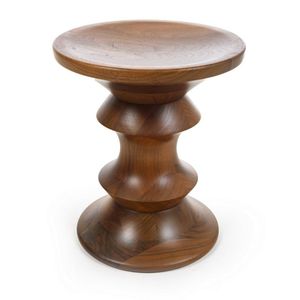Bronze Stands with Acanthus Leaf Capitals and Grape Motif
A matching pair of bronze stands with acanthus leaf plinth capitals, modelled with bunches of grapes and young naked children and with circular bases. Height 93 cm.
You must be a subscriber, and be logged in to view price and dealer details.
Subscribe Now to view actual auction price for this item
When you subscribe, you have the option of setting the currency in which to display prices to $Au, $US, $NZ or Stg.
This item has been sold, and the description, image and price are for reference purposes only.
- Acanthus - A stylized leaf motif, one of the primary decorative elements of classical Greek and Roman architecture, derived from the genus of flowering plants in the family Acanthaceae, native to tropical and subtropical regions of the Mediterranean area. It is a common element in classical Greek and Roman design, and is often seen in Corinthian and Composite order columns and used as a decorative element in English, European and Australian furniture, particularly on the curve of a leg, and as decoration for a corbel.
- Bronze - An alloy of copper and tin, traditionally in the proportions of about 9 parts of copper to 1 part of tin.
The discovery of bronze in Western Asia in the 4th century enabled people to create metal objects which were superior to those previoulsy possible because of its strength and hardness, and it has been used throughout the world for weapons, coins, tools, statuary and other decorative items.
It is very fluid in a molten state, and its hardness, strength when set, and non-corrosive properties makes it most suitable for casting sculpture. - Plinth - The square or rectangular base of a piece of cabinet furniture, often ornamented with moulding. The plinth may be separate, as in some wardrobes or presses, and act as the support for the carcase. In a false plinth, the moulded boards may be attached directly to the piece. Furniture with a plinth base usually does not have separate feet. The term derives from architecture where it denotes the base of a column or statue.
Visually similar items

A pair of cast iron garden urns on concrete plinths. Total 115 cm.
Sold by
in
for
You can display prices in $Au, $US, $NZ or Stg.

Charles and Ray Eames for Herman Miller. Time life stool in walnut, shape B
Sold by
in
for
You can display prices in $Au, $US, $NZ or Stg.

Charles & Ray Eames stool for Herman Miller carved walnut America, designed 1960, 38 cm high, 32 cm deep
Sold by
in
for
You can display prices in $Au, $US, $NZ or Stg.

Good Japanese bronze candlestick / lamp base
Sold by
in
for
You can display prices in $Au, $US, $NZ or Stg.
